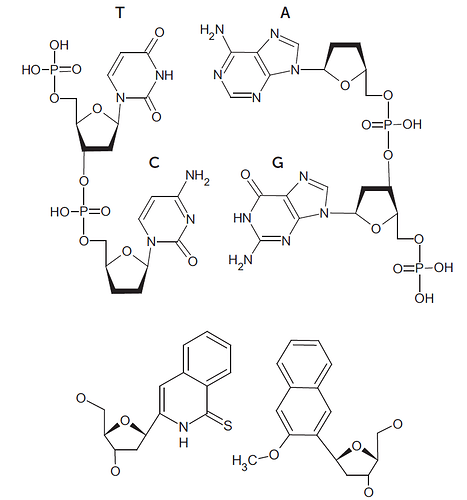I can understand your experts, @hhyyrylainen.
If you don’t mind, I’ll tell details later. Possibly, nearer to 11th may. My book stayed at home, there is all information, i told you here. 2016. Author has different awards thanks to it. And that’s why i asked about reasons of “Outdate” of theory. It has many good concepts of appearing RNA, possible to fast replication.
As i know about peptides, they really stable. Here is my mistake. I meant peptide bond. When in environment a lot of water, bond isn’t stable absolutely and in nature, usually, it destroys and creates with similar speed. Peptides have many bonds, helping to create hard forms needed for right work (remember about a and B forms of peptides).
I suppose, yes, nucleobases. On my language they are amino bases¯_(ツ)_/¯
I mean formulas of alternative nucleotides. They are here
And about lipid membranes: you see, how low chance of getting in? I don’t think, it wil work so. Even if this happened, i think, in environment created much harder chains, having more nucleotides. And they have much bigger speed of creating it.
